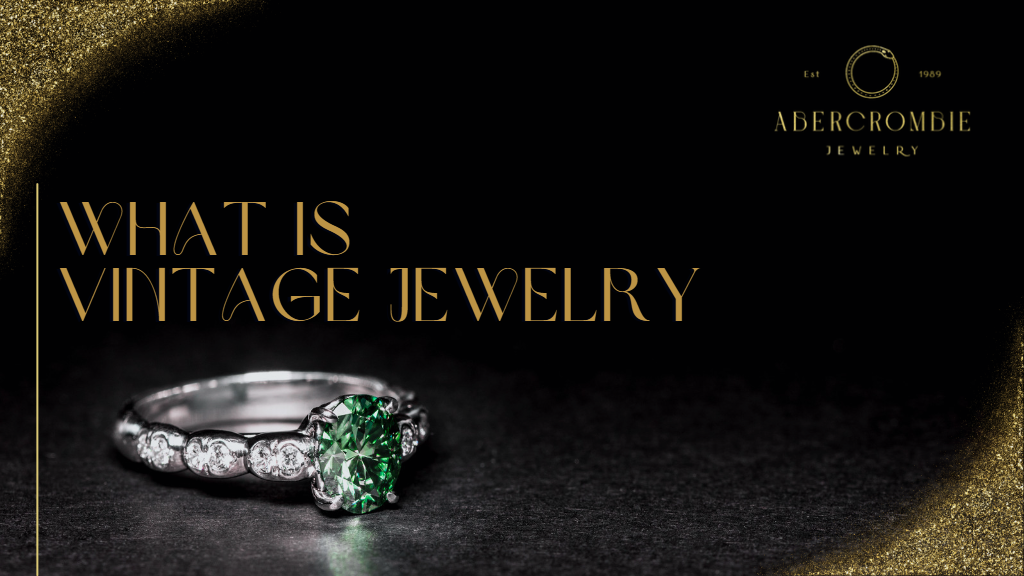Welcome to the enchanting world of vintage jewelry, where history, artistry, and fashion intertwine to create timeless treasures. Imagine draping yourself in pieces whispering tales of bygone eras, each with a unique story and charm. Vintage jewelry, often defined as items at least 20 to 30 years old, captivates with its unparalleled craftsmanship and the distinct styles of the periods it represents.
Unlike its older counterpart, antique jewelry, which hails from over a century ago, vintage pieces offer a closer connection to the recent past, making them highly accessible and versatile in today’s fashion landscape. Whether you’re a seasoned collector, a fashion lover, or someone who cherishes sustainable choices, vintage jewelry opens up a world of historical significance, artistic expression, and potential investment opportunities. So, what is vintage jewelry? Dive into this guide to explore the allure of vintage jewelry, understand its value, and learn how to care for these precious pieces, ensuring they continue to tell their stories for generations to come.
What is vintage jewelry?
Vintage jewelry refers to pieces previously owned and characteristic of a particular era, typically at least 20 to 30 years old. This jewelry category is highly sought after for its uniqueness, craftsmanship, and history, offering a glimpse into the fashion and cultural trends of past decades. Unlike antique jewelry over 100 years old, vintage pieces are often more accessible and adaptable to current fashion trends, making them a popular choice among collectors and fashion enthusiasts alike.
The allure of vintage jewelry lies not only in its aesthetic appeal but also in its potential as an investment. Many vintage pieces, especially those from well-known designers or made with high-quality materials, can be appreciated over time. Additionally, the sustainability aspect of purchasing pre-owned jewelry appeals to environmentally conscious consumers, making vintage jewelry a desirable option for those looking to reduce their ecological footprint.
Collecting vintage jewelry requires a keen eye for detail and an understanding of the pieces” historical contexts. Each era, such as the Art Deco, Victorian, or Retro period, has distinct styles and motifs reflected in the jewelry designs. Recognizing these characteristics can enhance the appreciation of vintage jewelry and guide collectors in making informed decisions.
In summary, vintage jewelry encompasses previously owned pieces from specific eras, offering a blend of historical significance, unique design, and the potential for appreciation in value. Its appeal spans collectors, fashion enthusiasts, and those looking to make environmentally responsible choices, making vintage jewelry a cherished and sought-after category in the world of accessories.
Why do people collect vintage jewelry?
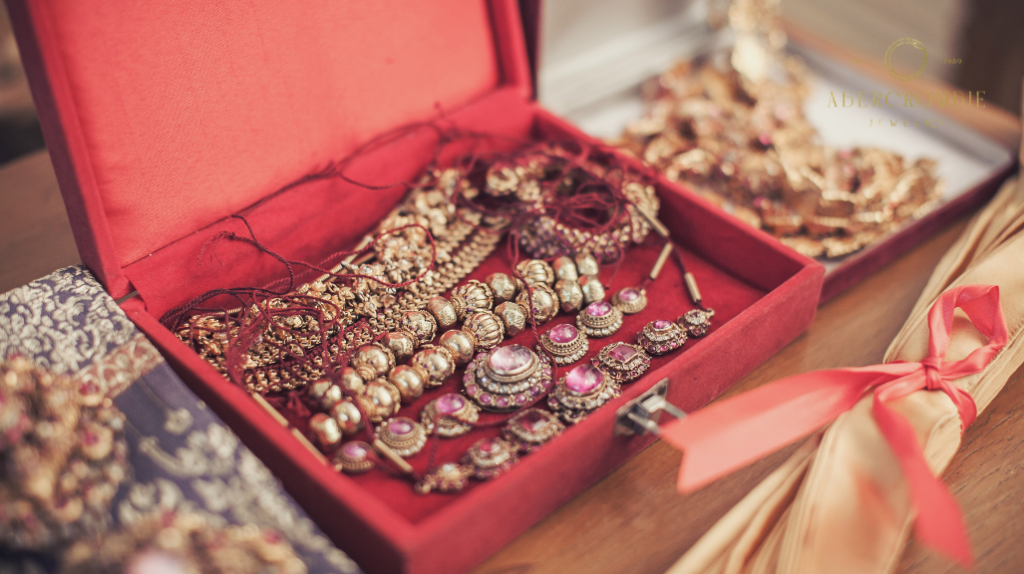
People collect vintage jewelry for several compelling reasons. Historical significance plays a major role, as each piece tells a story from the past, offering a tangible connection to different eras and their unique cultural and fashion trends. This historical allure is complemented by the unique designs of vintage jewelry, which stand out for their craftsmanship and creativity, often unmatched by contemporary pieces.
These designs reflect their time’s artistry and aesthetic preferences, making each piece a work of art. Moreover, vintage jewelry is seen as a valuable investment. Over time, certain pieces, especially those from renowned designers or crafted with rare materials, can increase in value.
This potential for appreciation makes vintage jewelry a fashion statement and a smart addition to one’s assets. Collectors are drawn to vintage jewelry for its blend of beauty, history, and value. It satisfies an emotional connection to the past and a pragmatic view toward the future, making it a multifaceted hobby or passion.
This understanding aligns with the search intent of individuals looking to explore the depth and breadth of vintage jewelry, whether they are seasoned collectors, fashion enthusiasts, or investors in unique and historical pieces.
Historical significance
Vintage jewelry is a window to the past, capturing the essence of bygone eras. Each piece holds stories reflecting the social, cultural, and fashion trends of its time. This connection to history enriches the collector’s understanding and adds depth and character to each piece, making it more than just an accessory.
Unique designs
The allure of vintage jewelry is often found in its unique designs. Unlike mass-produced contemporary pieces, vintage jewelry showcases its era’s meticulous craftsmanship and artistic expression. These designs, ranging from the intricate patterns of the Art Deco period to the bold and colorful styles of the Retro era, offer unparalleled beauty and distinctiveness.
Investment value
Vintage jewelry is a testament to artistic and historical significance and a potential financial investment. Pieces from notable periods or esteemed designers can appreciate over time, especially if they are well-maintained and in good condition. This appreciation makes vintage jewelry a smart choice for collectors looking to combine their passion for beauty and history with an eye toward investment.
How do you identify vintage jewelry?

Identifying vintage jewelry involves looking for specific markers that indicate its age and authenticity. Hallmarks and maker’s marks are crucial; these stamps or engravings often include the maker’s logo, the year of manufacture, and sometimes the production location, providing a direct link to its origins. Craftsmanship and construction techniques also offer significant clues; handcrafted details, unique settings, and construction methods that differ from modern mass-produced jewelry can signal a piece’s vintage status.
Lastly, the materials used and their age can indicate the era a piece belongs to. Certain metals, gemstones, and styles of cut were more prevalent in specific periods. Recognizing these materials’ condition can help confirm the piece’s vintage nature.
Together, these elements form a comprehensive approach to identifying vintage jewelry, catering to collectors and enthusiasts eager to authenticate and appreciate their finds.
Hallmarks and maker’s marks
Hallmarks and maker’s marks are key identifiers for vintage jewelry. Often found on the inside or back of a piece, these marks can reveal the creator, the place, and sometimes the year of creation. Recognizing these stamps can provide a direct connection to the piece’s history and authenticity, making them invaluable to collectors.
Craftsmanship and construction techniques
The craftsmanship and construction techniques used in a piece of jewelry can also indicate its vintage status. Handcrafted details, such as intricate metalwork or hand-set stones, suggest a piece might be vintage. Additionally, construction techniques that differ from today’s methods, like older types of clasps or settings, can signal that a piece is from a different era.
Materials used and their age
Finally, the materials used and their age are crucial in identifying vintage jewelry. Specific metals, gemstones, and even the style of gemstone cuts can indicate certain periods. For example, platinum was widely used in the early 20th century, while bakelite was popular in the 1930s.
Observing these materials and understanding their historical usage can help pinpoint the age of a piece.
Where to find Vintage Jewelry
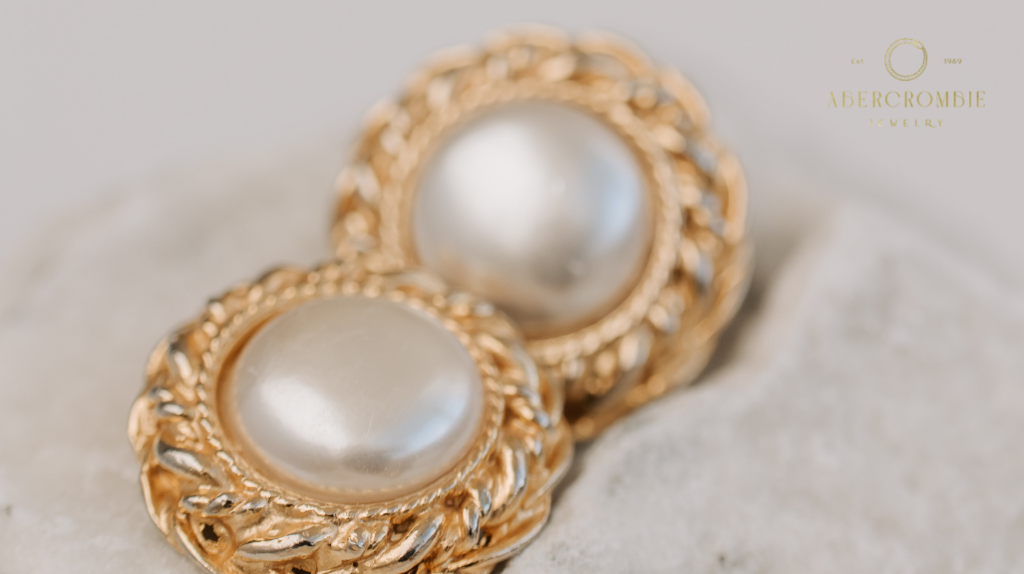
Finding vintage jewelry can be an exciting treasure hunt, with several avenues to explore. Antique stores and specialty boutiques are prime spots for discovering unique pieces. These stores often curate a selection of vintage jewelry, providing a range of options from different eras and styles.
Online marketplaces and auction sites offer a broader reach, allowing collectors to find rare and specific items from sellers worldwide. This digital avenue can be particularly useful for those looking for pieces from specific periods or designers. Estate sales and flea markets are another valuable source of vintage jewelry.
These venues can yield unexpected finds, often at more affordable prices. Each channel provides a unique approach to finding vintage jewelry, catering to collectors’ and enthusiasts’ diverse preferences and search intents.
Antique stores and specialty boutiques
Antique stores and specialty boutiques are treasure troves for vintage jewelry enthusiasts. These shops carefully select and display various pieces from different periods, offering diversity and quality. Shopping in these stores allows for a tactile experience, where buyers can inspect each piece closely, appreciate its craftsmanship, and sometimes learn about its history directly from knowledgeable sellers.
Online marketplaces and auction sites
Online marketplaces and auction sites have revolutionized the way collectors find vintage jewelry. Platforms like eBay, Etsy, and specialized auction houses provide access to a global selection of items, making locating rare and sought-after pieces easier. These sites cater to a wide range of budgets and tastes, and detailed listings often include photographs and thorough descriptions to help buyers make informed decisions.
Estate sales and flea markets
Estate sales and flea markets offer the thrill of the hunt for vintage jewelry collectors. These venues are known for their unexpected finds and the potential for significant bargains. Estate sales, in particular, can be a source of high-quality pieces from private collections, while flea markets might offer more eclectic selections.
Both settings provide a unique shopping experience, inviting collectors to discover hidden gems amidst diverse items.
How to care for Vintage Jewelry
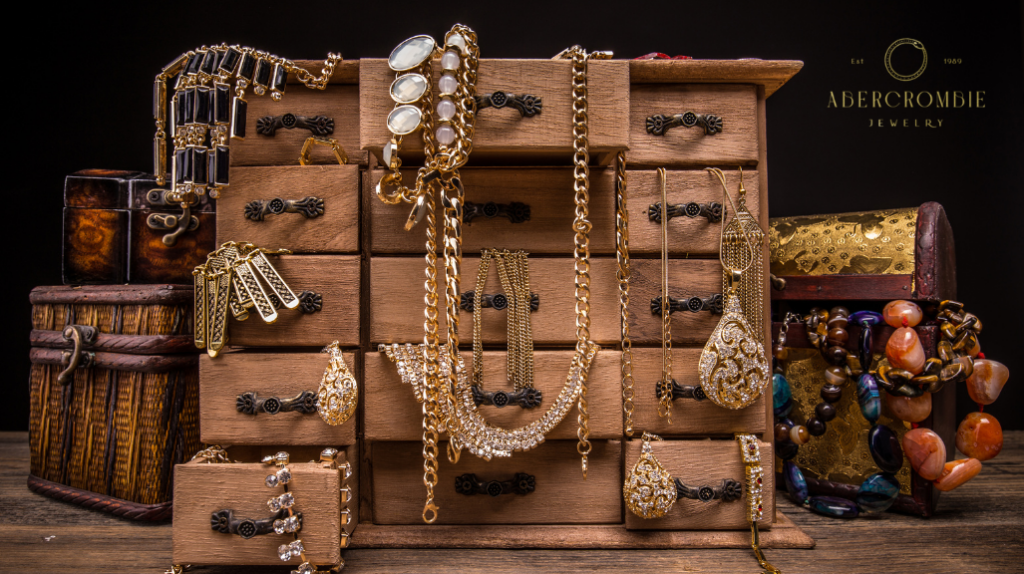
Caring for vintage jewelry requires a gentle approach to preserve its beauty and integrity. Gentle cleaning methods are essential; harsh chemicals can damage delicate metals and gemstones. Instead, carefully clean the piece with a soft cloth and mild soap solution.
Proper storage solutions are also crucial for preventing damage. Vintage jewelry should be stored separately to avoid scratches and tangling. Using soft-lined jewelry boxes or individual pouches can protect each piece.
Additionally, professional maintenance and restoration services can be invaluable for vintage jewelry, especially for items that require more complex repairs or cleaning. Seeking help from professionals specializing in vintage pieces ensures that repairs are done with attention to preserving the original craftsmanship and materials. Following these care instructions helps maintain the beauty and value of vintage jewelry for years.
Gentle cleaning methods for delicate pieces: Gentle cleaning methods are paramount for delicate vintage jewelry to avoid causing damage. A soft, lint-free cloth lightly dampened with a mild soap and water solution can effectively clean these pieces without harming them. It’s important to avoid soaking, as water can loosen settings and damage certain gemstones or metals.
After cleaning, gently pat the jewelry dry with another soft cloth.
Proper storage solutions to prevent damage
Proper storage solutions are crucial in preserving the condition of vintage jewelry. Each piece should be stored separately to prevent scratches or tangling when jewelry is jumbled. Soft-lined jewelry boxes, individual pouches, or compartments offer ideal conditions for jewelry storage.
For extra protection, wrapping pieces in acid-free tissue paper before storing them can help maintain their integrity over time.
Professional maintenance and restoration services
Professional maintenance and restoration services play a vital role in the care of vintage jewelry, especially for particularly fragile items or intricate designs. Specialists in vintage jewelry can offer cleaning, repair, and restoration services that respect the original craftsmanship. Seeking professional help ensures that any wear and tear or damage can be addressed with the appropriate techniques and materials, thereby preserving the piece’s beauty and value for future generations.
Determining the value of vintage jewelry
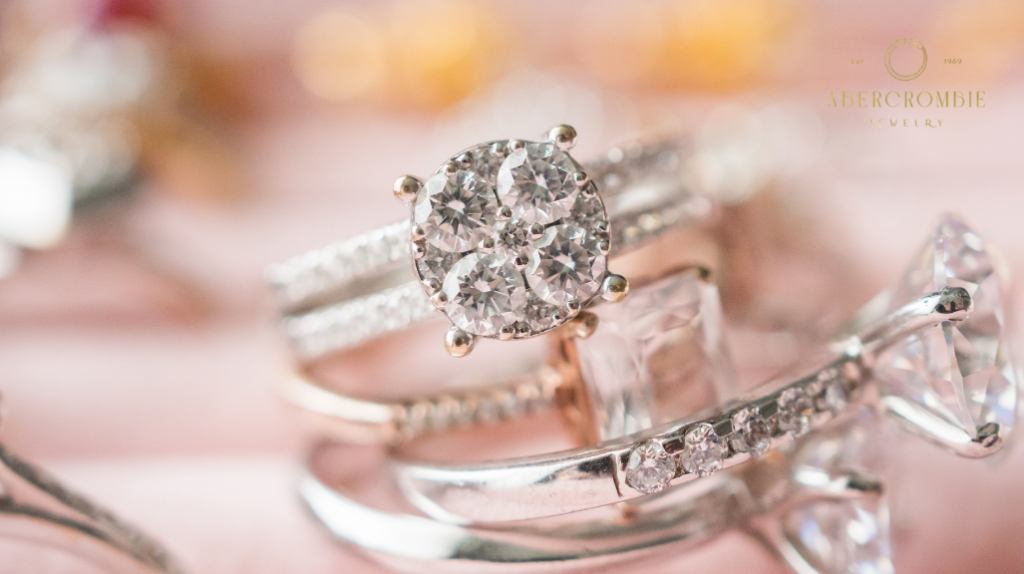
Determining the value of vintage jewelry involves a multifaceted approach. Researching the piece’s history and maker is a critical first step; understanding the era, style, and designer or manufacturer can significantly influence a piece’s market value. Assessing condition and rarity is equally important; well-preserved pieces or those rare or unique command higher prices.
Finally, consulting a professional appraiser specializing in vintage jewelry can provide an authoritative valuation. An appraiser can consider the piece’s historical significance, craftsmanship, material, and current market trends to accurately estimate its worth. This comprehensive evaluation helps collectors and sellers alike understand the true value of their vintage jewelry, whether for insurance purposes, resale, or personal knowledge.
Researching the piece’s history and maker
Researching the piece’s history and maker is essential in determining the value of vintage jewelry. Discovering who made the piece and when it was made can greatly affect its worth. Pieces from well-known designers or historical periods often have a higher value.
This step involves examining any hallmarks, maker’s marks, and stylistic attributes that can link the jewelry to a specific time and creator.
Assessing condition and rarity
Assessing condition and rarity is crucial for valuing vintage jewelry. The better the condition of a piece, the more valuable it is likely to be. Rarity also plays a significant role; pieces that are unique or were produced in limited quantities are typically more sought after.
Wear, damage, and modifications can affect a piece’s overall value.
Consulting with a professional appraiser
Consulting with a professional appraiser is a definitive step in accurately determining the value of vintage jewelry. Appraisers with expertise in vintage pieces can provide valuable insights into a piece’s worth, considering its history, condition, rarity, and current market trends. This professional assessment is especially important for insurance purposes or when considering a sale, ensuring that the jewelry’s value is understood and protected.
The difference between vintage and antique jewelry
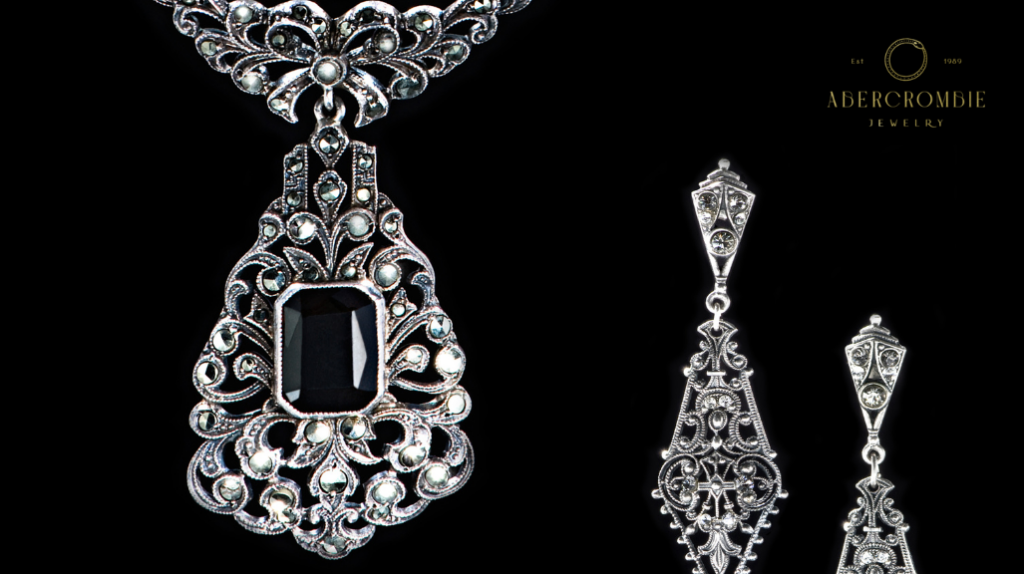
Understanding the distinction between vintage and antique jewelry is crucial for collectors and enthusiasts. Antique jewelry refers to pieces that are at least 100 years old, connecting them to a historical period that is significantly past. This category often includes items from the Victorian, Edwardian, and Art Nouveau periods.
On the other hand, vintage jewelry is generally defined as pieces at least 20 to 30 years old but not yet reaching the century mark. Vintage pieces reflect the styles and trends of more recent decades, such as the Art Deco, Retro, and Mid-Century Modern eras. Age is the primary factor distinguishing vintage from antique jewelry, but both categories are valued for their unique designs, craftsmanship, and the historical significance they carry.
Collectors might choose between vintage and antique pieces based on personal taste, the era of interest, or investment potential, making understanding their differences fundamental.
Age requirements for vintage vs. antique
The primary distinction between vintage and antique jewelry lies in their age. Antique jewelry must be at least 100 years old, linking it to historical periods far removed from the present day. Vintage jewelry, in contrast, encompasses pieces that are at least 20 to 30 years old but have not yet reached the century mark.
This age criterion is crucial for correctly classifying jewelry pieces and understanding their place within history and the market.
Style and design trends in different eras
Different eras are characterized by distinct styles and design trends reflected in their jewelry. For example, the Art Nouveau period, known for its organic and flowing designs, contrasts with the geometric shapes and bold colors of the Art Deco era. Recognizing these stylistic signatures helps identify the era a piece of jewelry belongs to and appreciates its artistic and historical context.
Each period’s unique aesthetics contribute to the charm and value of both vintage and antique jewelry pieces.
Collectibility and market value considerations
Collectibility and market value are significantly influenced by a piece’s age, rarity, and the era it represents. Antique jewelry often holds higher value due to its age and the historical significance attached to it. However, vintage jewelry can also be highly collectible, especially from iconic periods like the Mid-Century Modern era or those associated with famous designers.
The market value of vintage and antique jewelry is determined by conditions, provenance, and current fashion trends, making some pieces highly sought after by collectors and investors alike.

